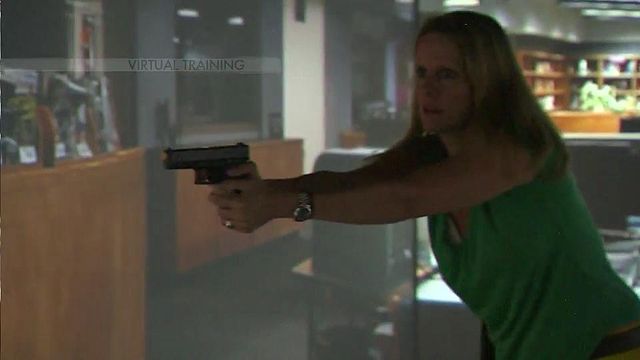Virtual training puts WRAL reporter in police shoes
To understand a bit of what law enforcement officers experience when faced with a split-second decision whether to fire their weapon, I went to a one-of-a-kind virtual training center in Hickory that does just that.
Posted — UpdatedIt all started with the shooting death of Michael Brown, an unarmed man, in Ferguson, Missouri, in August of last year. Since then, the national conversation has roiled with questions about how police make split-second decisions when to shoot and when to hold their fire.
A big part of this discussion has centered around how officers are trained to make these critical, life-changing decisions under intense stress.
I've got to admit, I was very nervous. I had never fired a gun before, so this was a brand new situation for me.
Luckily they were very patient and gave me good instructions before we started.
The simulation is so real. Your heart beats fast, your palms sweat. It's not only scary, it's a huge responsibility. You really get a better understanding of what police officers across the country go through every single day.
At the Tactical Defense Academy in Hickory, virtual training begins with safety.
But neither instructions from Jeff Eddins, nor the fact that the gun is not real, fully prepared me.
With five screens to simulate real-life scenarios a police officer might be put in, I had to decide if the person in front me was a deadly threat.
Eddins, a retired SBI agent, opened the range 14 months ago to help officers and private gun owners learn when to shoot. So far, he's served about nine law enforcement groups. Eight hours of training for 30 officers costs $1,000.
Among the virtual scenarios are an office, a movie theater, a school and an attack by a person with a knife.
"What are you going to do?" Eddins asked. "Because you've got 1.13 seconds to decide and he's coming."
"You did a lot of things you did right," he said. "You practiced good muzzle control. You kept your finger out of the trigger until you were ready. Your shots were pretty accurate."
But I didn't think to look for additional suspects, which caused me to be shot more than once.
When officers go through the training, they wear two shock buttons on their belts to simulate what it feels like when the suspects return fire. Just to be clear I chose not to wear them, so yes, I am officially a wimp.
• Credits
Copyright 2024 by Capitol Broadcasting Company. All rights reserved. This material may not be published, broadcast, rewritten or redistributed.





